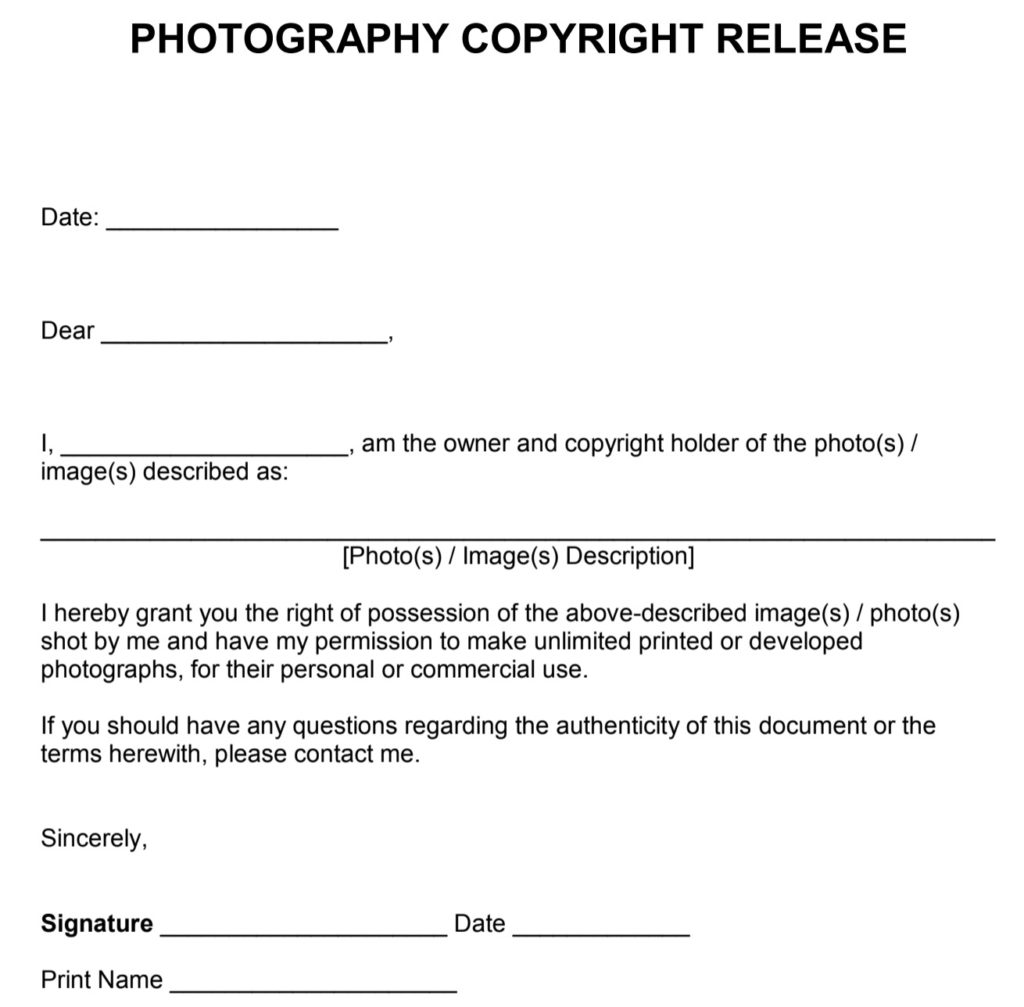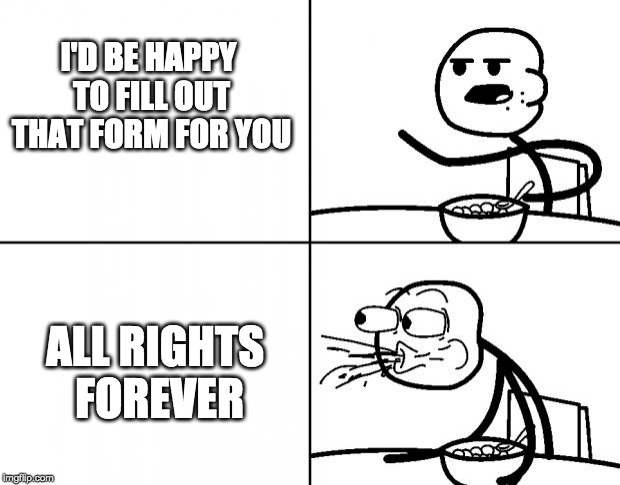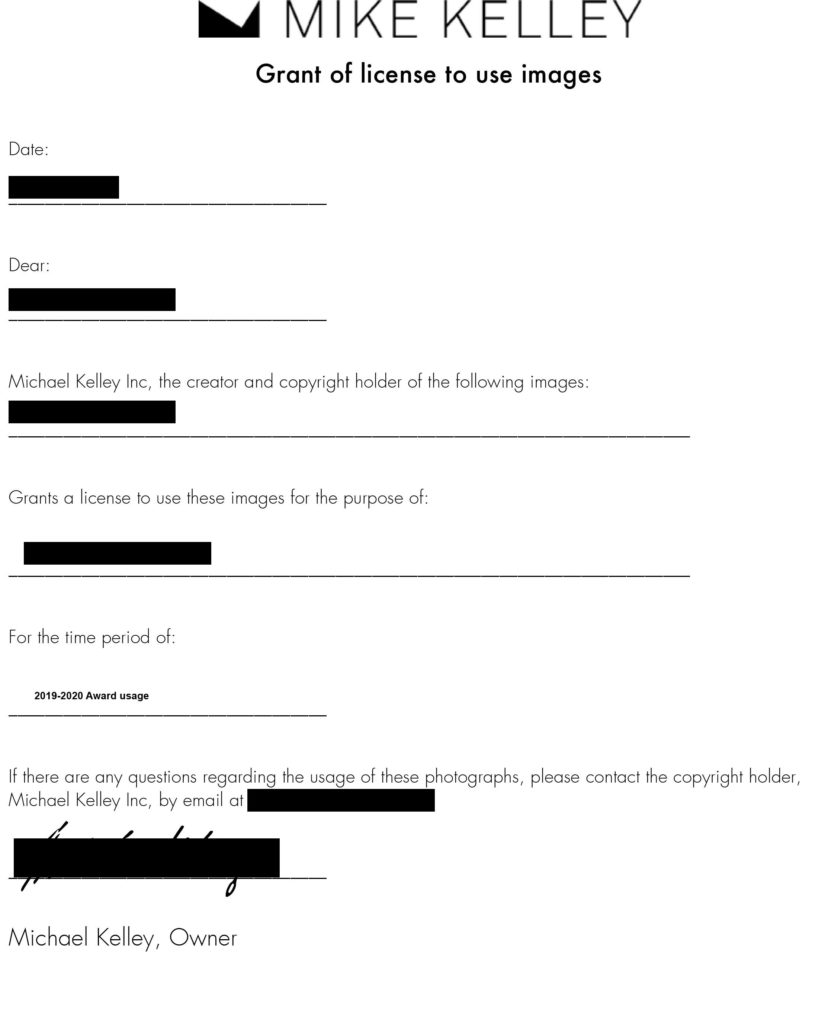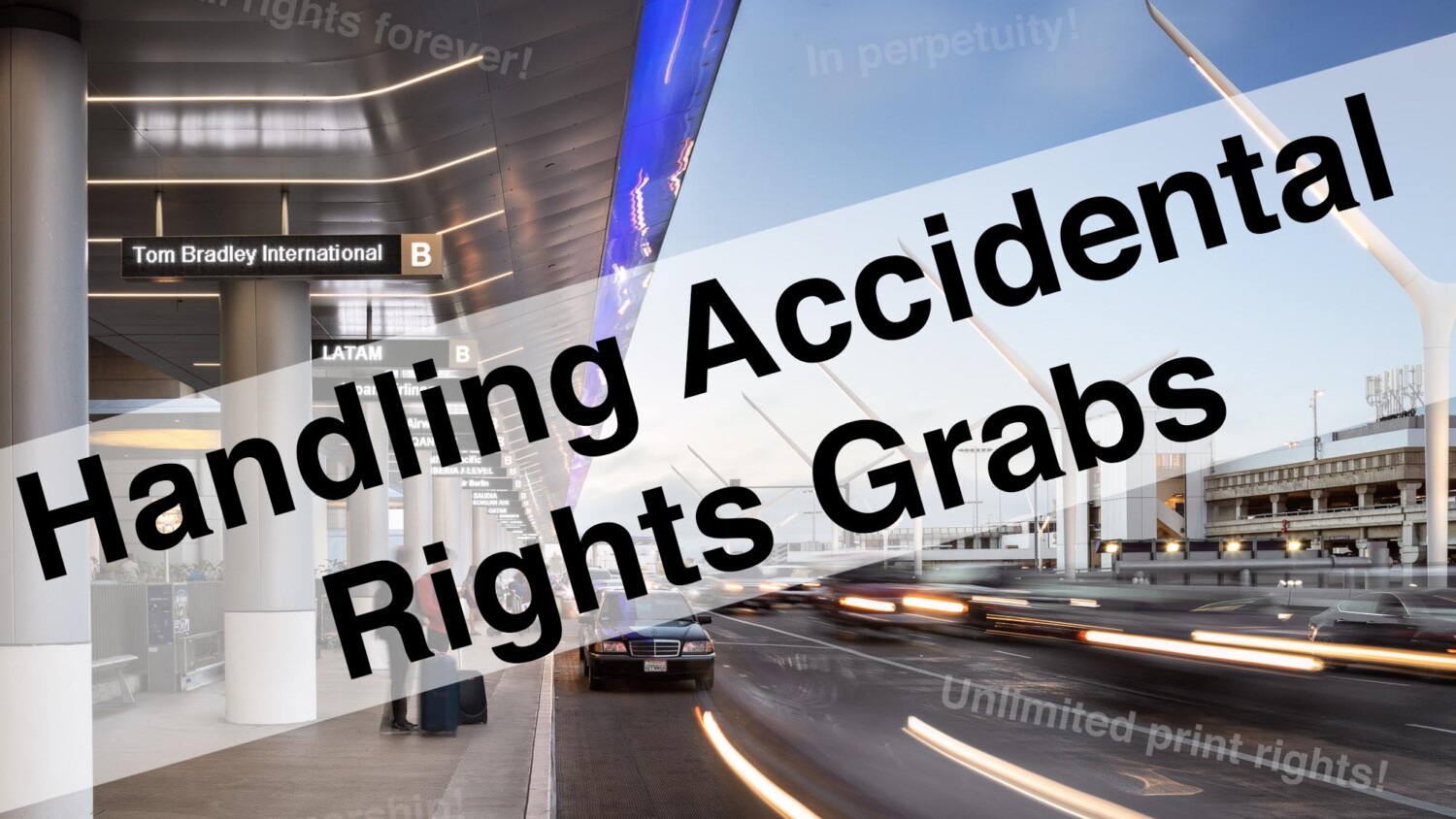How to Tactfully Handle Egregious Rights Grabs
It seems near-constantly that we are asked for ‘all rights’ to the photographs, or to own them in ‘perpetuity’ for some reason or another, but a recent e-mail exchange I was a part of presented a perfect opportunity to share one way I ensure my clients have the license they need while at the same time not giving in to overreach and a loss of image rights.
When this occurs
There are often situations in which you may be asked to provide a release for something such as a contest entry, or perhaps you need to extend specific rights to a PR agency or advertising agency working on behalf of your client. A common one for me is magazines wishing to publish my clients’ work; they will often request a written statement declaring that you are the copyright holder and that rights are granted for re-printing in that publication.
In most cases this is not a problem; most PR agents working on behalf of my clients are just doing the same type of marketing that my clients would be doing (contest entry, editorial, etc) and maybe they buy a few ads here and there depending on what kind of client they are.
When it’s a problem
Every now and then, however, I get a PR agency or a magazine that sends me a contract to sign which I just have to laugh at. Here is a recent example:
My name is Jennifer and I work with Your Client (name redacted) as their PR firm. We are hoping to submit the photos you took at ZYX House to the upcoming 2020 Big Award For Architects and wanted to get your approval and/or input. We are required to send a signed release form for the photos, in the event the project is chosen.
-Initial client contact email
Please let me know if you have any questions and always, thank you for your time.
I of course responded quickly and politely, saying I’d be happy to sign a form stating they have these rights in case the project was featured or won the competition. I quickly heard back, and this is where things started to get a little fishy.
Attached to the response email was the following PDF:

I don’t believe that this was sent to me with any ill-intent, but rather a lack of information on behalf of the PR company. In no universe did they actually need the right of possession or permission to make unlimited printed or developed photographs for their personal or commercial use. What probably happened was they either hired a (bad) lawyer to draft this up, or, more likely, found it on the internet and have been using it for a while – and I doubt I was the first one to have been sent this PDF.
My initial reaction was something like this:

I was tempted to shoot back a sarcastic response but I didn’t because I’m a professional, right? Of course these emails are frustrating to get, but it’s important to take a deep breath, have a snack, and really get to the bottom of what is really being asked for and what is really needed in these situations.
Obviously my client (an architect) wants to submit photos for a contest. Not a problem. They have hired a PR firm to do this, and other things, for them. Again, not a problem at all – the PR firm wants to cover their ass, rightfully so, and is doing their best to do that. No bridges need to get burned, no angry emails have to get sent, even though, yes, this is an (accidental!) egregious rights grab.
Here’s how I responded:
Hi Jennifer,
I can’t agree to a copyright release or transfer of ownership of the images as the form requests, but have uploaded a license agreement addendum here (in addition to the original license agreement shared with The Client, which outlines standard usage arrangements and allows for unlimited contest entry)
I have attached a signed and dated form stating that the use of these images for the contest is permitted, if that will work for you. Please let me know if you have any questions.
Best,
Mike
Here is the PDF that I use for these situations:

The PR firm responded that this was in fact perfectly fine and what they needed all along, and thanked me for sending it so quickly. I have this PDF, blank, on hand, just for situations like this – and it may behoove you to make one as well, as it only takes a few minutes in InDesign or Photoshop. I also use this for extending rights outside the original scope of the contract (for example, if a client wants to purchase images for magazine advertising, I can whip up one of these forms so that terms about licensing are crystal clear – I’ll send it along with the invoice and T+C, which has more specifics contained within)
Bottom Line
Even thought it’s easy to just say “whatever, it’s fine, they don’t really NEED all rights forever, so I’ll just sign this quickly and get on with my day” it is important that when you see an instance of this, you speak up to protect your intellectual property. While the odds of this turning into a significant problem are small, it’s more about sending a clear and consistent message to clients and their business associates that our intellectual property is valuable and well-managed. It does sadden me a bit to know that there are probably tens, if not hundreds, of photographers who have gone before me and signed this release, as this is a relatively big regional competition.
You don’t have to be obnoxious about it, or burn any bridges in the process – but it is important to educate at every chance we get about our licensing practices. Too many have fought for too long to get to this point to let it all slip away.
